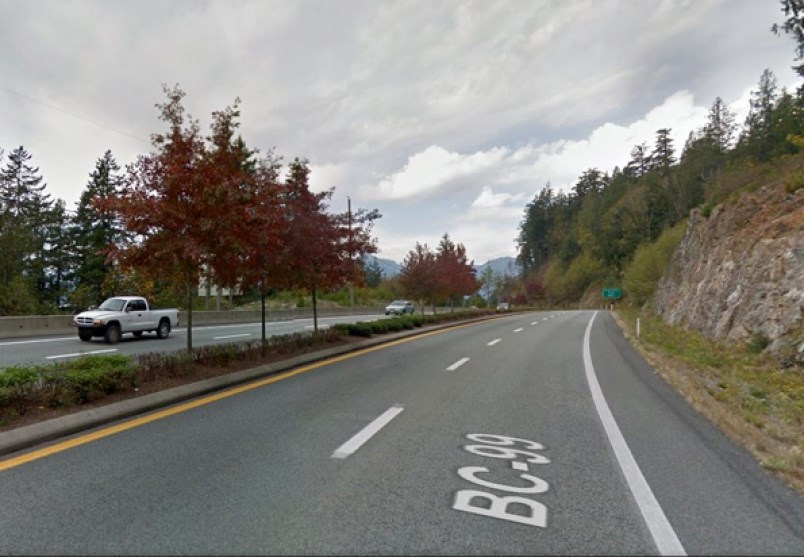Everyone can agree on one thing – the decorative trees dividing a windy stretch of the Sea to Sky Highway aren’t solving the number of serious crashes.
The section of road just north of Lions Bay before Brunswick Beach is a “hot spot” for vehicle accidents, said Lions Bay Mayor Karl Buhr.
On July 9, a head-on collision sent four people to hospital, one with serious injuries, and closed down the highway for hours.
This accident comes just weeks after a Vancouver man was killed after he crossed into the oncoming lane and was struck by an SUV – again causing extensive traffic delays.
One option is to replace the current median, which contains freshly-planted shrubs, with a solid concrete barrier. However a new divider, said Buhr, could decrease the severity of crashes but won’t actually stop accidents from occurring.
It’s a problem of speed.
“I’ve seen cars speed through there at 110 kilometres an hour. Motorcycles at 160 kilometres an hour,” said Buhr, who travels that stretch of highway, which has speed limits of 60 and 70 km/h, several times a day.
“Drivers can’t believe the speed limit is so low. Out-of-town cars think they can go faster, but also those familiar with the roads are going way past the speed limit too.”
Traffic engineers are analyzing what could replace the vegetative median, but the design of the road needs to be taken into account to ensure there is enough room for concrete divider, said MLA Jordan Sturdy, who didn’t have an exact timeline for when the engineering studies would be complete.
“It’s a challenging piece of road, especially for those not familiar with it,” he said.
Last week, the province announced $5.4 million in upgrades on the Sea to Sky Highway from Lions Bay to Whistler that includes work already completed just north of Lions Bay. A curve warning sign and electronic signage that alerts drivers if they are going over the speed limit were installed earlier this year.
To help slow drivers down, Buhr suggested using “speed zones” where photo radar would track how fast cars are going. Offenders would be given a ticket.
“It works well in Ontario and overseas such as in Australia,” he said. “People need to believe these speed limits.”
But Sturdy said photo radar isn’t a practice the provincial government currently supports because signs and other measures are proven to be more effective.
More than a dozen Squamish residents reached out on social media to express their concern about this stretch of highway.
“The only problem I ever have in that area is people flashing their lights at me, tailgating, passing fast and cutting me off, and all because I drive below 70 in that clearly-marked 60 zone,” Squamish resident Nicole Sims said on Facebook.
Another Squamish resident, Kristin Piljay, said there wouldn’t be so many accidents if drivers went the posted speed limit.
“Every time I drive past that area I try to figure out why people crash there and I have no idea. Doesn’t even seem that twisty to me. But then again I also drive less than 70 in that area too and most people pass me,” she said on Facebook.
The precise number of accidents that occur at this spot is difficult to determine.
Between 2009 and 2014, the whole four-kilometre section of highway in Lions Bay saw 91 collisions, with 34 involving injuries, and one fatal incident, according to the province.
But Buhr said ICBC’s statistics don’t track the number of accidents in such a precise area. He has, however, seen firsthand that many go unreported.
“I’ll drive by and see a bush destroyed (on the median) and dirt on the highway. Or the car behind them will see the accident and report it to the firefighters, but no one is there when they arrive.”




